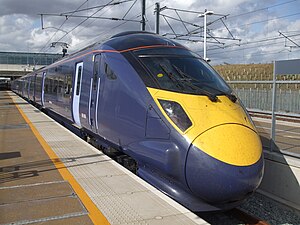neroden wrote:If proposed commuter service in Raleigh came to pass, it would add several additional trips and probably justify electrification of the part of the corridor through Raleigh. Hopefully they'd have the sense to use the 25kV overhead system!Good point! I had forgotten about the proposed commuter service. I think I saw somewhere (maybe on the NCRR's website) that a study is under way regarding what types of capacity improvements would be needed for a VRE-style commuter service in two segments on the NCRR. Hopefully, electrification will be one of the improvements mentioned.
We are becoming so accustomed to millions and billions of dollars that "thousands" has almost passed out of the dictionary. -- Everett Dirksen

